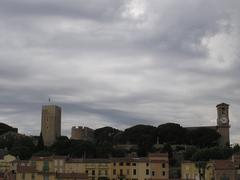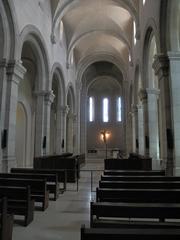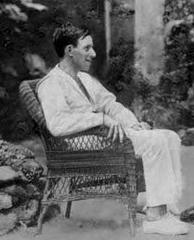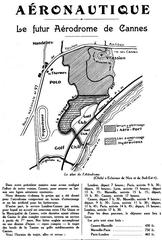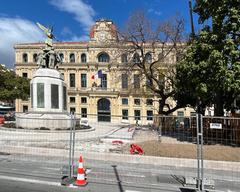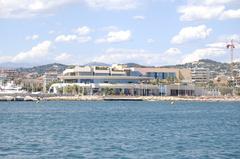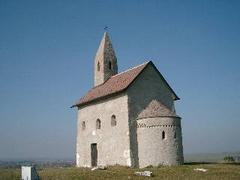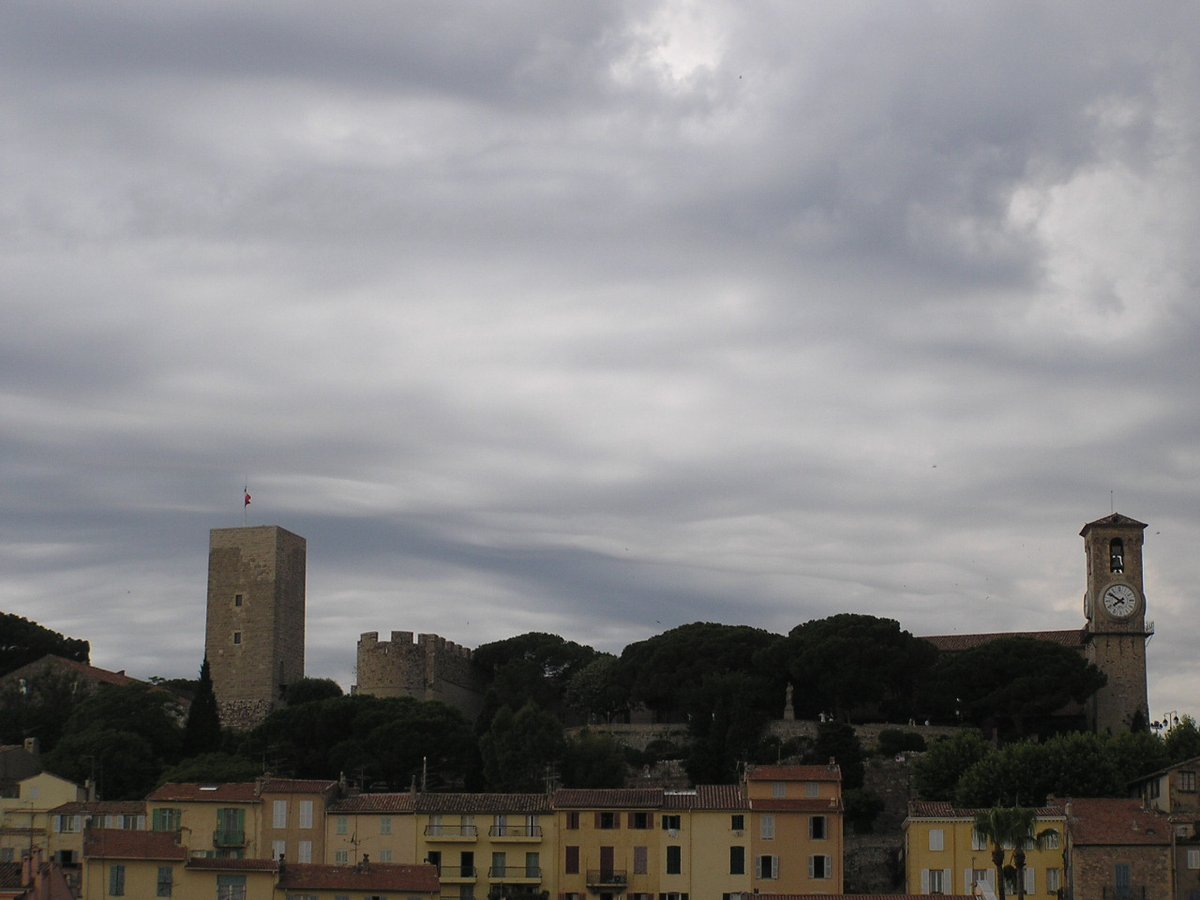
Comprehensive Guide to Visiting Place de la Castre, Cannes, France
Date: 01/08/2024
Introduction
Nestled atop Suquet Hill in the historic district of Cannes, France, Place de la Castre is a treasure trove of history and culture. Originally inhabited by monks from the Lérins Abbey in the 11th century, this site has evolved from a strategic medieval castle into the Musée de la Castre, a museum showcasing a diverse array of artifacts from Mediterranean archaeology to ethnographic collections. Its panoramic views, well-preserved architecture, and rich historical significance make it a must-visit destination for history enthusiasts and casual travelers alike. Whether you are exploring its medieval origins, admiring its extensive collections, or simply soaking in the breathtaking views from the watchtower, Place de la Castre offers a unique and enriching experience that reflects the cultural heritage of Cannes. For more detailed visitor information, including ticket prices and opening hours, check the official website.
Table of Contents
- Introduction
- History of Place de la Castre
- Collections and Exhibits
- Visitor Information
- Notable Features
- Cultural Events and Activities
- Nearby Attractions
- Practical Tips for Visitors
- Conclusion
- FAQ
History of Place de la Castre
Origins and Early History
Place de la Castre, located in the historic district of Le Suquet in Cannes, France, is a site steeped in history. The area was originally inhabited by the monks of the Lérins Abbey, who established a medieval castle on the hilltop. This castle served as a strategic lookout point, offering panoramic views of the surrounding bay and the Lérins Islands. The monks’ presence in the area dates back to the 11th century, making it one of the oldest inhabited sites in Cannes.
The Medieval Castle
The medieval castle that stands at Place de la Castre today was constructed in the 12th century. It was initially built as a fortress to protect the region from invasions and to serve as a residence for the monks. The castle’s architecture is a testament to medieval engineering prowess, featuring thick stone walls, narrow windows, and a watchtower that provided a 360-degree view of the surrounding area. This watchtower, known as the Tour du Suquet, remains one of the most iconic features of the site.
Transformation into a Museum
The transformation of the medieval castle into the Musée de la Castre began in the late 19th century. The museum’s foundation was laid when Dutch Baron Tinco Martinus Lycklama, who resided in Cannes during the late 1800s, bequeathed his private collection of antiques, oriental artifacts, ethnography, and primitive art to the city in 1877. This generous donation marked the beginning of the museum’s extensive collection, which now includes Mediterranean archaeology, ethnology, and early art.
Architectural Significance
The architectural significance of Place de la Castre lies in its well-preserved medieval structures. The castle’s inner courtyard, accessible through the museum, is a highlight for visitors. The courtyard leads to the 12th-century watchtower, which has been converted into a chapel dedicated to Saint-Anne. This chapel houses a unique collection of musical instruments from around the world, adding to the site’s cultural richness.
Collections and Exhibits
The Musée de la Castre boasts a diverse range of collections and exhibits. Visitors can explore small rooms surrounded by gardens, where art collections and objects from Oceania, the Himalayas, the Arctic, and pre-Columbian pottery are displayed. Three rooms are specifically dedicated to Orientalism and art from Iran, reflecting the museum’s commitment to showcasing global cultures.
Visitor Information
Visiting Hours
For those planning to visit Place de la Castre, the museum operates on a seasonal schedule. From October to March, it is open from Tuesday to Sunday, 10 am to 1 pm and 2 pm to 5 pm, and is closed on Mondays. During the months of April to June, the hours extend to 6 pm, with nocturnes on Wednesdays until 9 pm in June. In the peak summer months of July and August, the museum is open daily from 10 am to 7 pm, with extended hours on Wednesdays until 9 pm. It is important to note that the last admission is 30 minutes before closing time (CityXee).
Ticket Prices
Tickets for Place de la Castre can be purchased at the museum entrance. Prices vary depending on age and residency, with discounts available for students, seniors, and groups. Check the official website for the latest pricing information and any special offers.
Accessibility
The museum is equipped with amenities to ensure a comfortable visit for all guests. There is a small garden at the entrance, planted with Mediterranean species, including large umbrella pines, which provides a serene setting for visitors. The museum is also accessible to individuals with disabilities, with ramps and elevators available to navigate the different levels of the castle.
Notable Features
One of the most notable features of Place de la Castre is the panoramic view from the watchtower. After climbing 109 steps, visitors are rewarded with a breathtaking 360-degree view of Cannes and the coastline. This vantage point offers a unique perspective of the city and its surroundings, making it a must-visit spot for tourists.
Cultural Events and Activities
Place de la Castre is also a venue for various cultural events and activities throughout the year. The museum hosts temporary exhibitions, workshops, and educational programs that cater to a wide range of interests. These events provide an opportunity for visitors to engage with the museum’s collections in a more interactive and immersive manner.
Nearby Attractions
Visitors to Place de la Castre can also explore other nearby attractions in Le Suquet, the old town of Cannes. This historic district is known for its narrow winding streets, charming cafes, and local markets. Notable sites include the Forville Market, where visitors can sample local produce and delicacies, and the Bellini Chapel, a beautiful example of Baroque architecture.
Practical Tips for Visitors
To make the most of your visit to Place de la Castre, it is advisable to check the museum’s opening hours and any special events or exhibitions in advance. Comfortable walking shoes are recommended, especially if you plan to climb the watchtower. Photography is allowed in most areas of the museum, so don’t forget to bring your camera to capture the stunning views and exhibits.
Conclusion
In summary, Place de la Castre offers a rich historical and cultural experience for visitors to Cannes. Its well-preserved medieval architecture, diverse collections, and panoramic views make it a must-visit destination for history enthusiasts and tourists alike. For more information, you can visit the official website.
FAQ
What are the opening hours of Place de la Castre? The museum operates on a seasonal schedule. From October to March, it is open from Tuesday to Sunday, 10 am to 1 pm and 2 pm to 5 pm. From April to June, it is open until 6 pm, with nocturnes on Wednesdays until 9 pm in June. In July and August, the museum is open daily from 10 am to 7 pm, with extended hours on Wednesdays until 9 pm.
Is Place de la Castre accessible to people with disabilities? Yes, the museum is accessible to individuals with disabilities. Ramps and elevators are available to navigate the different levels of the castle.
Call to Action
Stay updated on the latest events and exhibitions at Place de la Castre by downloading the CityXee mobile app. For more travel tips and guides, check out our other posts and follow us on social media.
